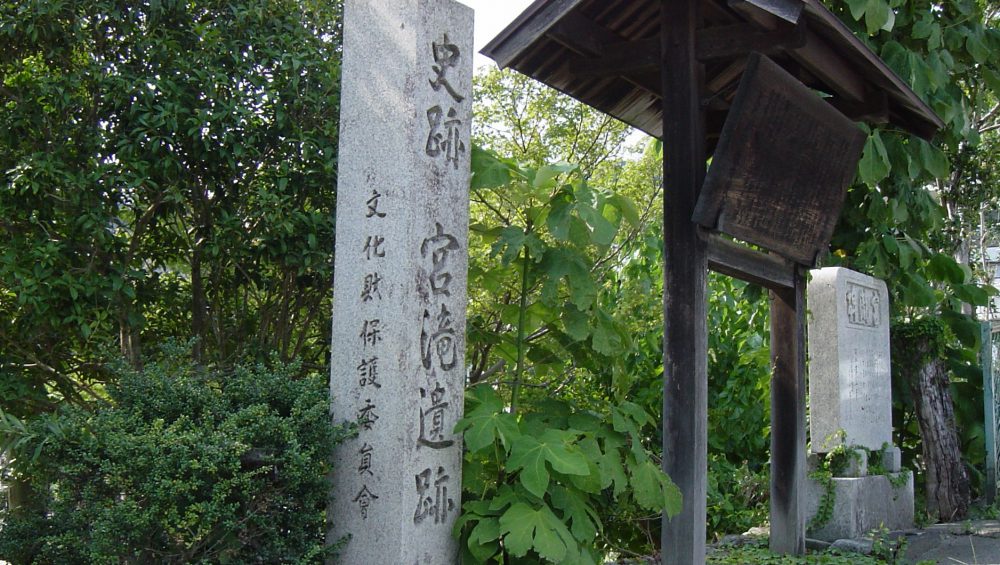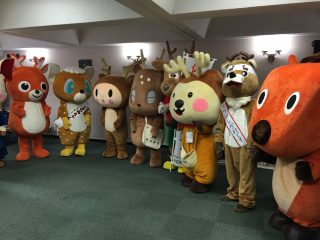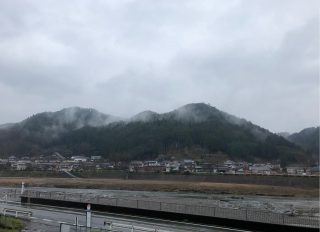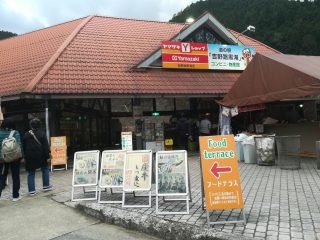Once upon a time there was an imperial villa called “Yoshino-no-miya” in the Yoshino region.
But old books didn’t say where exactly this villa was located.
In the beginning of the Showa era, various controversies arose in research magazines and newspapers over the undetermined location of Yoshino-no-miya.
Below, I would like to take a deeper look at the situation surrounding the search for the old imperial villa during this time:
First, let’s examine the arguments of two different opposing sides of the debate:
Argument from Mr. A:
“Recently, some people claim that Yoshino-no-miya near ’Niu Kawakami Shrine (Middle Shrine) in Higashi-yoshino Village’.
However, their arguments seem forced and none of their theories were convincing.
I hope that these people who believe this idea can reflect more on their ideas and consider going back to the fundamentals of research.

Niu Kawakami Shrine (Middle Shrine) which some researchers claimed to be the location of “Yoshino-no-miya”.
Argument from Mr. B:
“Recently, there are an increasing number of people who believe that Yoshino-no-miya was located in Miyataki, Yoshino Town. A contradiction has been pointed out in this theory and no one can definitively prove that Yoshino-no-miya was there.
I hope people who claim, ‘Yoshino-no-miya was in Miyataki because the scenery of the river is beautiful’ retract this weak argument.

Miyataki in Yoshino Town, which some researchers claim was home to Yoshino-no-miya long ago.
The story of this conflict up to this point goes like this….
At the beginning of the Showa era, the controversy over the location of Yoshino-no-miya repeatedly arose among researchers.
According to old materials, Yoshino-no-miya existed from the Asuka era to the Nara era (around 592-794). At that time, it seems that many emperors of Japan visited Yoshino-no-miya, leaving behind many poems in “Manyo-shu.” In addition, it was also the beginning of a major incident that appeared in the “Jinshin War.”
Therefore, discovering Yoshino-no-miya became a priority of researchers who wanted to make a discovery of great importance.
Because of such a background, the repeated and heated debate over the location of Yoshino-no-miya that occurred in the beginning of the Showa era became serious.
For example, at a meeting hosted by the Nara Prefectural Office, both parties disagreed with each other and face-to-face discussions were held.
From then on out, both parties started pushing harder. One group started excavation research at their own expense, and the other began to search place names.
After that, each group made a statement about the location of Yoshino-no-miya in a research magazine. In each case, they criticized the other group by name.
In the beginning, it was just a dispute between historians, but as the situation became bigger, university professors and others became involved in supporting the different parties’ claims. This made the situation even more intense and out of control.
Strangely, something happened that accelerated things even more…
A man plowing a field in the Miyataki area of Yoshino Town dug up some pottery from the Yayoi era (around 300 BCE – 300 CE).
In response to the report, officers at the Nara Prefectural Office started academic excavations of the Miyataki site from an early stage.
One has to wonder how the people in charge of the actual excavation were feeling as the debate raged on between the two sides about the location of the Yoshino-no-miya. It can be assumed that the work was very stressful considering the pressure brought on by the conflict.
The Nara Prefecture Office took eight years, from start to finish, to complete the excavation at Miyataki. Despite their efforts, no evidence was found of the location of Yoshino-no-miya.
They could not obtain sufficient information from the archaeological research they conducted at that time.
While discussions continued in research magazines, excavation surveys at the Miyataki site also continued, with the number of different projects hitting 70 by the year 2020.
Accumulation of new research results gradually increased over the years and in recent times, the conclusion has nearly been made that Yoshino-no-miya was in fact in Miyataki.
Concrete evidence of this conclusion includes a pond and garden arrangement at the Miyataki site that was only otherwise found in the capital city of Asuka during the Asuka Period.
The research also found out that in the Nara era, a large building with the same number of pillars as the Dai-goku-den of Heijo Palace was built at the Miyataki site, and that it used the same pattern of tiles as the emperors’ private room at the Heijo Palace.
So, has the debate finally come to a conclusion?
It needs to be pointed out that the historians at the beginning of the Showa era were passionate people. Their work pushed the administration to start their own research and it continues to have an influence on people of today.
It has mostly been settled now that “Yoshino-no-miya” was located in Miyataki, Yoshino Town, but there are actually still five theorized sites out there (including Miyataki).
Where do you think “Yoshino-no-miya” was?
Why not do some research and offer your own opinion on the matter?




